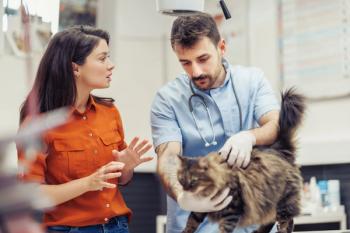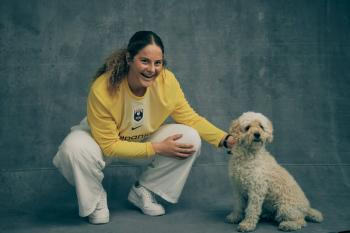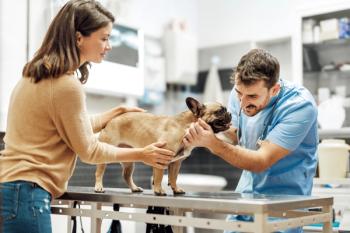
Case study: 4 lessons from a departing veterinary client
The 'Mikes' of the veterinary world don't leave in a cloud of drama but quietly, thinking no one will miss them.
I talked to my good friend Mike today. He was just leaving his regular veterinarian's office … for the last time.
Mike first came to Main Street Animal Hospital (the name of this hospital has been changed) when he was searching for a veterinarian for his previous pet, which has since passed away. He was referred to a specific veterinarian at Main Street, and he was very pleased with her. When that veterinarian moved away approximately two years ago, Mike remained with the clinic.
Mike recently became the proud owner of a 20-month-old, neutered male miniature schnauzer named Omar. Omar was seen approximately three weeks ago at Main Street Animal Hospital for what was diagnosed as “a skin infection.” Omar responded well to antibiotic therapy, and his condition appears to have completely resolved.
However, three days ago Omar began lifting his leg and urinating in the house. This behavior is highly unusual for him.
The last two times Mike called Main Street (first for the skin infection and now for urination issues), he was told that it would be two to three days before the first available appointment time. Today Mike was told he could drop off a urine sample before 5 p.m. to get things started. So he packed up Omar and headed to the clinic.
When Mike arrived with Omar and the urine sample, he was disappointed to see that he was the only client there. It looked like two doctors were milling around in the back, and the waiting room and exam rooms were unoccupied.
“The front desk staff are very nice,” Mike told me at this point in the story, “but no one seems interested in getting pets in to be seen.”
Mike dropped the urine off at the front desk and explained Omar's problem to the staff member working there. She nodded and said, “Hmm. Intact dogs will do that sometimes.” Mike didn't point out that Omar was neutered and that the procedure had been done at this very hospital, but he took note of the error.
As Mike drove home, he wondered why no one had brought up the fact that Omar had a skin infection just three weeks ago. Could that issue be related to his current problem? Wasn't it at least worth discussing them together?
When it came time for the eventual appointment, an unfamiliar doctor came out to introduce himself and report the urinalysis results. Ever since Mike's original veterinarian left the practice, he's seen a different white-coat-clad person at each visit. At this point he's lost track of their names, and he doesn't feel like any of them know him or Omar. Each time he has felt like he was “starting over.”
The urinalysis did not reveal any abnormalities. In the course of a three-minute conversation, the veterinarian told Mike that blood work needed to be sent away to make sure Omar's kidneys were functioning correctly. Omar's blood was taken and sent to the lab with an assurance that the results would be back the next day.
Mike asked me if it was strange that a physical examination for Omar seemed to have fallen by the wayside. “I know I couldn't get an appointment for another day or two, but it seems weird to say he needs blood work without even looking at him,” he told me. “Does that seem weird to you?”
The importance of perception
I think it's important for me to point out that I have given you exactly one-half of the story. I have no idea what's going on at Main Street Animal Hospital. They may be doing a hundred thousand things behind the scenes-triaging emergencies, dealing with staff drama and sorting through practice owner health issues. I have no idea. Neither does Mike.
But that's actually what makes this such a good case study. We know what Mike saw and how he perceived it, as well as what action he took-leaving the practice. The staff at Main Street Animal Hospital probably has no idea Mike was so disappointed with them. They'll become aware only when another local clinic calls to get Omar's records. Ouch.
At the end of the day, client satisfaction-like a lot of things-comes down to perception: perception of animal care, perception of clinic experience, perception of veterinary staff behavior. So what can we do to prevent our own clients from feeling like Mike? What can we learn from his experience? I think a few lessons are clear.
If we want people to rely on us, we need to be reliable. I am a big believer in trying to space out appointments so that every client has the best experience possible. However, it's important to note that Mike believed his dog was ill-twice-and neither time could his veterinary clinic see him within 48 hours of his call. After that, the fact that the clinic did not appear busy and productive at a time that Mike had been turned away for an appointment was the final straw.
When pet owners are concerned, we need to be concerned. If we want them to count on us, we need to do all we can to be there for them. (It's worth noting, too, that we live in an on-demand world, where timeliness is becoming increasingly expected.)
We need to know our patients. How many times have you rushed into an exam room five minutes late and said something like, “It's Bailey! How's she doing today?” only to have the pet owner respond: “He's doing quite well.” On the surface this is a minor slip. To many pet owners, it's a sign that we don't know or don't care about their pets. Taking a moment to review information on the patient and the medical history may not score big points with pet owners, but not doing so can have consequences.
People want a relationship. Many pet owners want to have a veterinarian of their own. They want someone who knows their pets and who knows them. Main Street Animal Hospital never asked Mike if he had a doctor he preferred, nor did they try to reunite him with the last doctor he'd seen. As a result he didn't see much advantage to sticking with the practice. After all, he can see a rotating assortment of random doctors lots of places.
Make it easy for pet owners to see the veterinarian (or veterinary technician) they want to see. The bonds between a person and a person will always be stronger than the bonds between a person and a business.
Work up cases and bring owners along. Sometimes we feel like we're doing pet owners a favor by skipping the physical examination and going straight to diagnostics. Let's never forget that this approach can backfire. Mike spent $170 on diagnostic testing for his 20-month-old schnauzer. The fact that no one ever examined his dog or fully explained what might be accomplished by doing a blood panel was definitely not lost on him.
Focus on the physical examination and the diagnostic value it holds. The examination is our chance to educate clients about our concerns, the benefits of our recommendations and potential consequences of all possible courses of action.
Main Street Animal Hospital probably lost a client today, and that's sad. Mike says Omar loves going there. Moreover, their failures were not terrible, and Mike is not leaving in a cloud of drama. That's why the hospital will likely have trouble identifying which problems they need to fix-and why the rest of us should pay so much attention to Mike's story.
Newsletter
From exam room tips to practice management insights, get trusted veterinary news delivered straight to your inbox—subscribe to dvm360.




